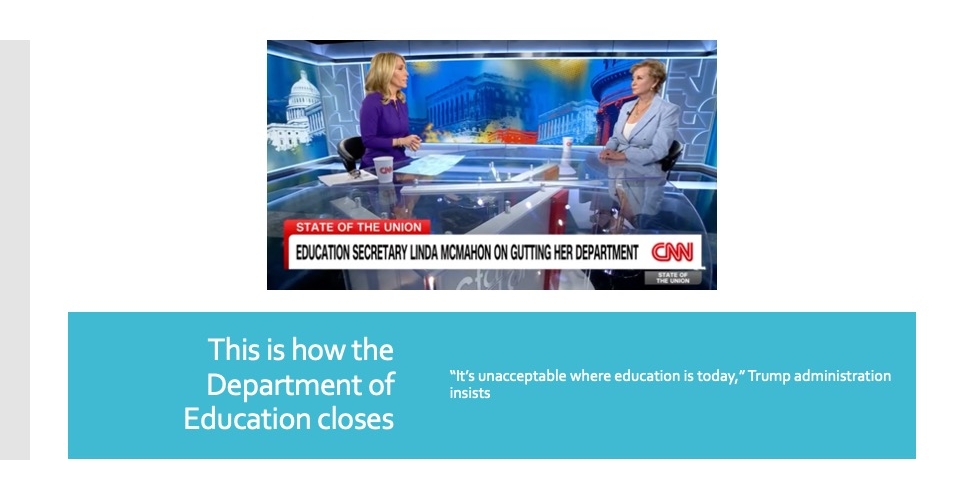Nearly 400 principals have brought their biggest priorities to the nation’s capital this week for the first-ever National School Leaders Advocacy Conference.
Student mental health and teacher vacancies are two of the hottest topics in meetings members of the National Associations of Elementary and Secondary School Principals are holding with Department of Education officials and members of Congress through Wednesday.
“Each and every day, our members work at the center of schools where they listen to and engage with students, staff and families to ensure that the needs of the community are being met,” NASSP CEO Ronn Nozoe said. “Representatives and policymakers must listen to their insights and heed their advice because it is the only way to reimagine and rebuild a system that ensures every student’s needs are met and provides access and opportunity to achieve their full potential.”
Fresh leadership: New superintendents step up in a dozen districts
Driving the National School Leaders Advocacy Conference agenda is NAESP research showing school leaders’ sense of urgency around helping students and staff cope emotionally with the trauma of the last three years. Principals also feel pressure to tackle high teacher turnover and provide “professional learning opportunities that target the new demands on the profession and changing needs of school communities.” “Leaving these issues unaddressed—or even under-addressed—will have a long-lasting negative ripple effect on education, the principal profession and student outcomes,” NAESP Executive Director L. Earl Franks said.
Solutions are steering the National School Leaders Advocacy Conference
The principals and their associations head to Congress on Wednesday to advocate for legislation they believe is essential to improving mental health care and reversing staff shortages. About three-quarters of both school leaders and students reported needing help with their mental or emotional health in 2022, an NASSP survey found. This has resulted in an increase in behavioral problems and students’ heightened fears of bullying and drug use in school.
And with one out of two school leaders thinking they may leave the profession within three years due to stress, principals and other administrators are hoping for increased federal investments in the educator pipeline and PD. Here’s a breakdown of the proposals.
Moving forward on mental health
- Elementary And Secondary School Counseling Act: Allocates $5 billion in new federal funding to establish two five-year grant programs to staff elementary and secondary schools with mental health services.
- Supporting The Mental Health Of Educators And Staff: Requires federal agencies to disseminate evidence-based best practices for preventing suicide, improving mental health and resiliency among educators, and training educators and school staff to care for their own mental health.
- Increasing Access To Mental Health In Schools Act: Establishes a new grant program to increase the number of mental health professionals at low-income schools by supporting partnerships between institutions of higher education and local education agencies to fund teaching, training, and employment of school counselors, social workers, and psychologists. It also expands student loan forgiveness opportunities for those professionals after five years of employment at qualifying schools.
- Mental Health Services For Students Act: Provides $130 million in grants to staff schools with on-site licensed mental health professionals.
Reversing staff vacancies
- Loan Forgiveness For Educators Act: Incentivizes candidates to work in early education programs and high-need public schools by
having the federal government make educators’ monthly student loan payments. It would forgive federal student loan debts at the end of five years of service. This legislation would also make school leaders eligible for assistance. - Educators For America Act: Invests $1 billion annually in the educator pipeline to ensure schools have a diverse, profession-ready workforce of teachers, principals, and specialized instructional support personnel. The legislation would boost outreach efforts to future teachers, expand educator residency programs, and invest in educator preparation programs.
- Preparing And Retaining Education Professionals Act: Expands the definition of “high need” districts under the Every Student Succeeds Act (ESSA) to include schools experiencing teacher shortages in rural communities as well as in areas like special education, English language, science, technology, engineering, math, and career and technical education in order to give schools access to additional support.
The principals also intend to advocate for several budget initiatives, including more funding for Title I, academic enrichment, special education, career-and-technical education and K12 leadership development.



